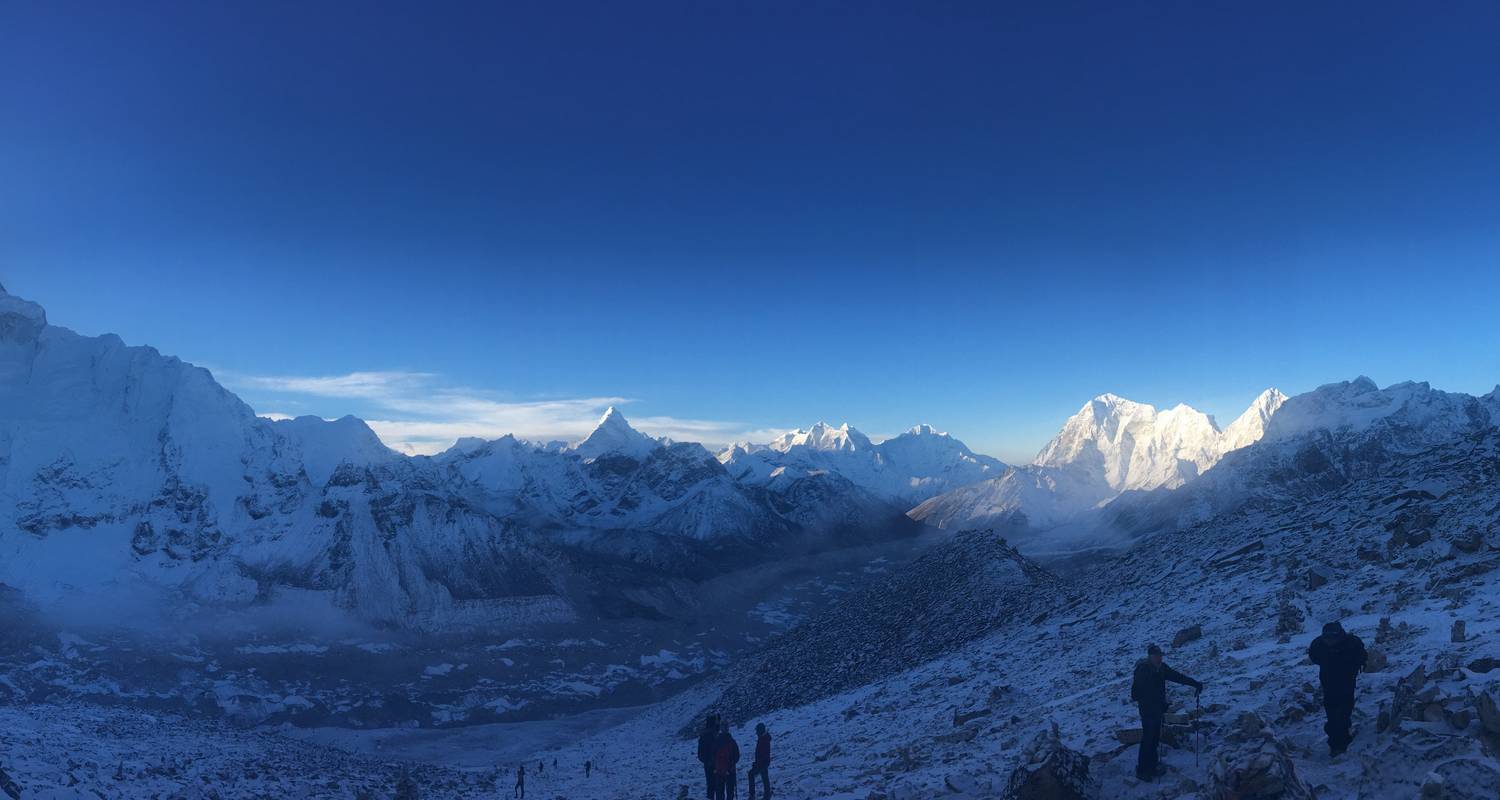Nepal's Changing Climate
 |
The mountain range of Mount Everest from South Col. AFP via Getty Images |
"Most of the tourists come to Nepal to see snow-filled mountains, but if these mountains turn into black hills that will ultimately affect tourism.""But the erratic snowfall seen in present days has made us question if that plan [to promote snow-based tourism; e.g. skiing holidays] will succeed."Dhananjay Regmi, chief executive officer, Nepalese tourism board"Seeing no snowfall at this time of year in Nepal is a very strange thing.""Climate change is something that I heard was happening in other countries, but now we are experiencing it in front of our eyes."Sushil Raj Poudel, president, Trekking Agencies Association of Nepal, western region"From our ancestors' days there has been the belief that there would be a bumper crop in a year that saw enough snowfall.""Now I have to buy food from outside [as warmer temperatures hit his fields]."Shanta Bahadur Bishowkarma, Dhampus region farmer"Due to rising temperatures in higher regions, insects are shifting from the lower belt, so new pests are seen in higher regions these days.""The mountainous districts are already struggling with food insecurity and these things make the problem more serious."Arjun Rayamajhi, plant protection officer, Agriculture Knowledge Center, Darchula

Extreme adventurers from abroad have traditionally gone to Nepal to register and pay the fee for climbing permits to enable them to set out on expeditions in the great Himalayan mountains representing the earth's crust's primal upheaval with mountains emerging that became the ceiling of the world stretching to the sky and beyond. To access K2 or Mount Everest is a lofty ambition of many extreme athletes and adventurers setting out on their own, with a small expedition, or those paying handsomely to be taken up the mountains by accredited expedition crews guided by sherpas.
The Himalayas play a more fundamental, utilitarian role in the region when its vast burden of seasonal snow begins to melt in the spring bringing down torrents of water in Nepal, India and China to communities living at the base of the mountains to irrigate farmers' fields and to provide potable water to those same communities and beyond. It's next-to-impossible to imagine any of these great giants of immense and vast geological formation without accumulated depths of snow.
It is that snow, along with the granite of the majestic mountains, their impressive heights and extreme weather conditions and rarefied oxygen that awe and thrill expeditions planning to achieve their summits in these realms of drama and beauty of these landscapes. Tourism and the dollars it brings in is a huge asset to these countries where so many of its people living in isolated splendour also live in poverty, reliant on the landscape's natural resources for water, and the draw of the tourism trade.
Hotels in the region, catering to snow-enthusiastic tourists are now lacking reservations; no one to come along and stay awhile in close view of the imposing mountains backgrounding the villages that host the tourist trade. "The snowfall we had five years ago we more than two-feet-deep -- but we didn't have significant snowfall after that", observed owner Baburam Giri in front of his Hotel Yama Sakura.
Of course, worldwide hotels in tourist spots that normally draw hundreds of thousands of people have been facing a similar dilemma during the global pandemic. In Nepal, however, the additional problem of a lack of snow in a landscape synonymous with snow has created an especial dilemma. Eventually tourists will return to those other places of immense tourist attraction; Nepal, however is facing a special situation that only nature herself can remedy.
 |
This picture taken on March, 24, 2020 shows mules carrying empty gas cylinders along a path in the AFP via Getty Images |
"Many domestic and local tourists come to this area to play in the snow whenever there is snowfall. But (now) the hotel is almost empty", the hotel owner mourned. Not only tourism is affected, but agronomy as well, along with industries that have their base in the mountainous regions of Nepal; all suffering a steep drop in income in recent years linked to a lack of heavy snowfall; their problem held by environmental and climate scientists to be linked to rising global temperatures reflecting climate change.
At the International Centre for Integrated Mountain Development, depending on remote sensing technology for data acquisition, studies show that snow cover has decreased steadily in Nepal and the Hindu Kush Himalayan region. "The temperature of Nepal is rising at the rate of 0.6C per decade", the regional program manager explained. Nepal's Department of Hydrology and Meteorology released a report in December that predicted the average temperature this winter would be above normal; the average precipitation below normal.
On agricultural land the snow and cold helped maintain crops free of pests,with cold temperatures killing off predatory insects and disease with the potential to destroy plants, failing to flourish in the extreme cold. It's a double disaster; since there is now insufficient melting snow to irrigate crops as there has always been, in the past. Low temperatures have the effect of diminishing pest reproduction. Pests that once could not survive in Nepal's icy mountains now are beginning to thrive there.
According to climate researchers, those familiar snow-full winters are set to become increasingly rarer in Nepal over decades to come. Leading Sushil Raj Poudel of the Trekking Agencies Association of Nepal to explain that group members no longer are able to rely on the tourist boom that would always materialize after heavy snowfalls.
 |
A sign points towards the Everest base camp in Solukhumbu district 140km northeast of Nepal's capital Kathmandu AFP via Getty Images |
Labels: Climate Change, Himalaya, Nepal, Snow Deficits, Tourism Decline

0 Comments:
Post a Comment
<< Home